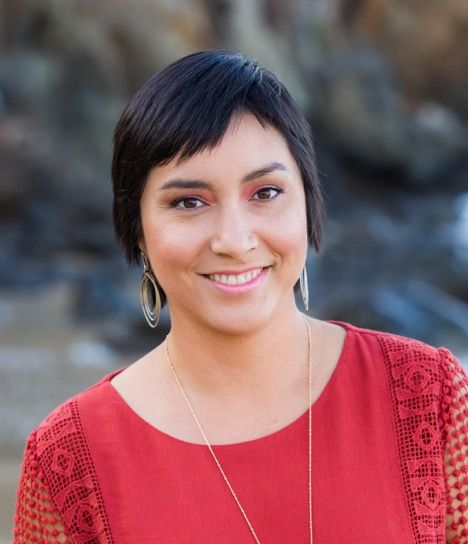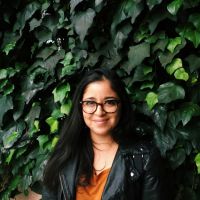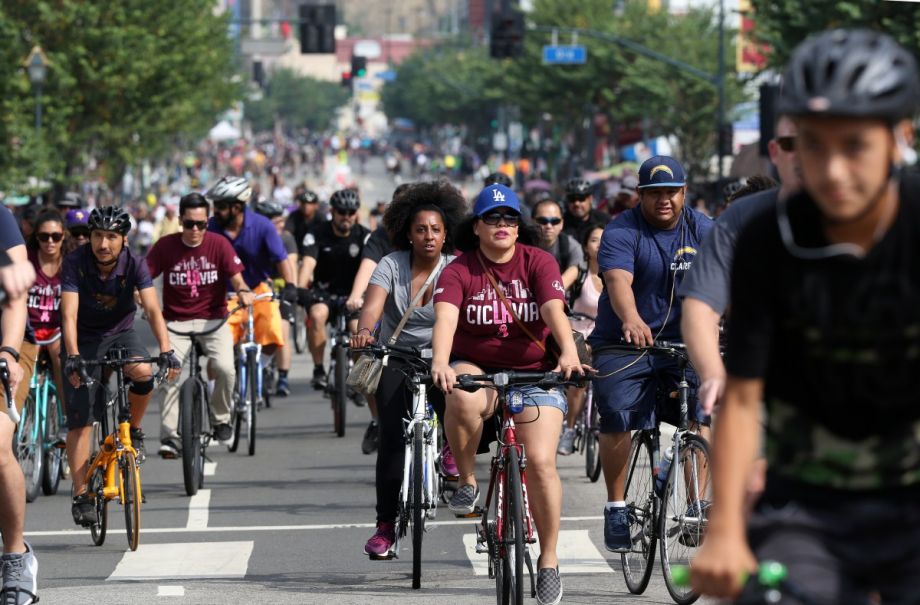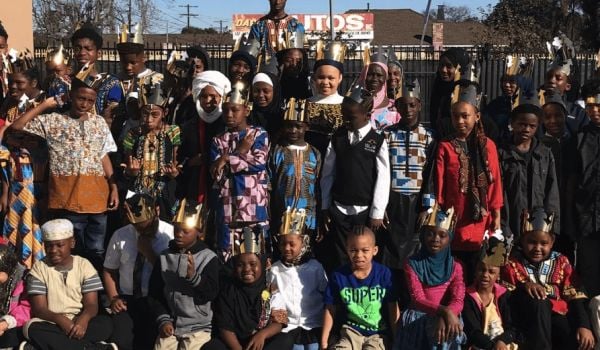José Umberto Barranco was a 32-year-old Orange County man killed in 2007 by a drunk driver who struck him as he was riding his bicycle home from work at a Denny’s in San Juan Capistrano, Calif.
He was one of many working-class people, day laborers, and Latino immigrants who ride bicycles as a necessity.
That incident helped one Chicana activist from San Juan Capistrano realize bicycle advocates weren’t discussing the needs of riders like Barranco, who in the transportation world are considered as “transit-dependent” or “captive riders.”
“What Jose Umberto Barranco’s death said to me was that this wasn’t just a matter of vehicle choice, bikes versus cars … Race and class hierarchy were mixed up in how we traveled and whose safety mattered,” writes Adonia Lugo in her new book, “Bicycle/Race.”
Lugo, 34, opens her book with a tribute to Barranco, but much of what follows is her own journey of coming to terms with race and class identity as she navigates biking advocacy and racial justice spaces. Neither side, she found, was guaranteed to be open to the other.
Lugo’s biking activism began in Los Angeles, the city that taught her about being Mexican-American. The term “Chicana,” was not one she heard growing up in a Latino enclave of mostly first-generation immigrants in Orange County’s San Juan Capistrano, Lugo tells Next City in an interview.
Lugo, who has a Mexican father and a white mother, became a bicycle rider after moving to Portland, Ore., for her undergraduate studies. She came back to Southern California and lived in the L.A. area while attending graduate school at the University of California Irvine. On bicycle, Lugo has traveled across Los Angeles, Portland, Seattle, and Bogotá, Colombia, to conduct research.
The way Lugo came to see it, bicycle culture was focused on people who opted to be “car-free,” meaning those who could afford to drive but chose not to. Discussions centered around attracting new riders and funding for new bike lanes and public space that would, in turn, increase a community’s property values. It was about trendy urban design, she says.
Funding for bike lanes wasn’t the answer she was looking for. What was needed on the street level were bike crews at high schools and stipends for those repairing bikes for kids in the neighborhoods — human infrastructure around biking. Also, she makes a case that poor people should get compensated for using bicycles “and being part of the growing network through which more sustainable transportation cultures could flow.”
As Lugo immersed herself in the biking scene in L.A., she began envisioning an open-streets event in the city, inspired by the “ciclovía” (bike path) culture of Bogotá, where major thoroughfares are closed to car traffic on Sundays.
It was a process that took years getting buy-in from local transportation and elected officials. What helped jumpstart the event, Lugo says, was an injury then-L.A. Mayor Antonio Villaraigosa suffered while bicycling on a congested Venice Boulevard. A motorist pulled out in front of the mayor who hit the brakes and fell off his bike. He fractured his elbow.
For Lugo, the event, dubbed CicLAvia, was a way to create a shared space for both the so-called “captive” bicycle riders and those who chose to be car-free. “I wanted to provoke dialogue on the wiggle room between official infrastructure and everyday street life,” she writes in her book. “What seemed genius to me about bringing the ciclovía to L.A. was that it would show who was already there on our streets.”
The first CicLAvia event was held in 2010, and as Lugo recalls, about 40,000 people rode bikes through historically Chicano Boyle Heights in East L.A., through Little Tokyo and Downtown L.A., into Central American neighborhood of MacArthur Park, and Koreatown, and ending in East Hollywood’s bicycle district, a hub for the cycling community in central Los Angeles. Now an annual event, organizers say it has led to the creation of more than 140 miles of open streets across the L.A. area.
Lugo also writes in her book about her time as managing an equity initiative for the Washington, D.C.-based League of American Bicyclists, hoping to build a “multiracial movement” within the bicycle advocacy world.
“I was worried because I was a Chicana anthropologist focused on human infrastructure, not a white person with a planning degree ready to fight for bike lanes,” she writes.
Her worry turned out to be warranted. Seeking to make connections in the D.C. equity landscape, she attended events related to racial and environmental justice to find collaboration opportunities.

Adonia Lugo. (Photo by Anna Goddard)
“But when I chatted with other kinds of advocates, what I heard was that they saw bicycling as something for white men, not a cause for people of color,” she writes. “The image of the white entitled cyclist … obscured the reality of bicycling as a survival strategy for the same communities of concern that were the focus of transportation and environment justice.”
Meanwhile, in her workplace at the League of American Bicyclists, Lugo faced scrutiny in the tone she used when talking about racial equity. Later, her scope of work changed to focus on Vision Zero, a strategy that aims to eliminate all traffic fatalities. Lugo thought this plan problematic given its emphasis on police enforcement of traffic laws.
“The timing for Vision Zero seemed way off,” she writes. “This was right when the Black Lives Matter movement had made racialized police violence into national news.”
Leaving D.C., Lugo returned to L.A., where she now works with the group People for Mobility Justice. She’s also part of The Untokening, a network of people with marginalized identities who work in transportation.
While her work in the bicycle advocacy world has had its difficulties, Lugo says she’s grateful for current discussions taking place now surrounding white supremacy.
“It was socially acceptable for white people to deny that they had been somehow complicit in racism,” she says. “I think it’s really neat that, as difficult as my work felt a few years ago, this is a time when our country is working on having those same conversations.”

Alejandra Molina is a Next City Equitable Cities Fellow for 2018-2019. Previously, she was a reporter for the Southern California News Group where she covered cities, immigration, race, and religion. In her decade-long career, she's reported how gentrification has affected downtown Santa Ana in Orange County, followed up how violent shootings have affected families and neighborhoods, and reported how President Donald Trump has impacted undocumented communities in the Inland Empire. Her work has appeared in The Press-Enterprise in Riverside, The Orange County Register, The Los Angeles Daily News, and The Mercury News in San Jose. She graduated with a bachelor’s degree in broadcast journalism from the University of La Verne, where she taught an introductory journalism course as an adjunct professor.




_920_518_600_350_80_s_c1.jpg)











